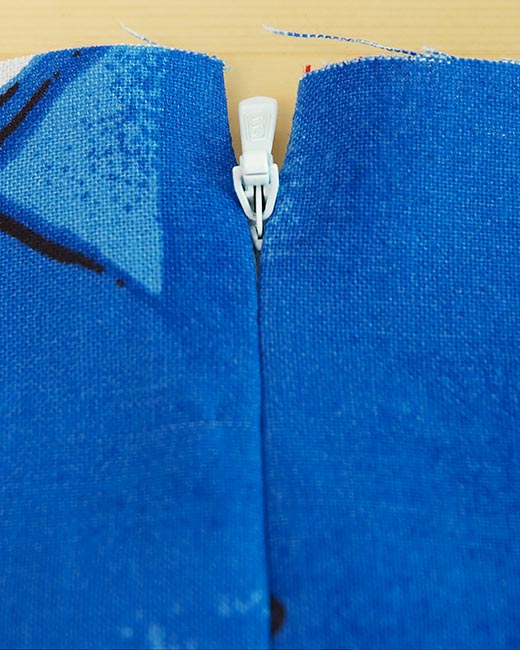
Invisible zipper is a challenge for many fresh sewers.
To the normal, mortal people it appears like some kind of black magic.
This is a method I invented which only requires a regular presser foot.
Normally you would need a special "invisible zipper foot" in order to sew them on beautifully. That is however an optional accessory on most sewing machines, which means many people don't have it. I first tried with the normal zipper foot, but it couldn't get close enough and the result were nowhere near invisible.
Then I experimented and came up with a way to make it look awesome (see picture) and that without the use of any special accessories! Just the regular foot.
I cannot guarantee it would work on every sewing machine, but it works wonder on my 25 years old Bernina.
This is the old method. A new and improved method is available here.
How to do it
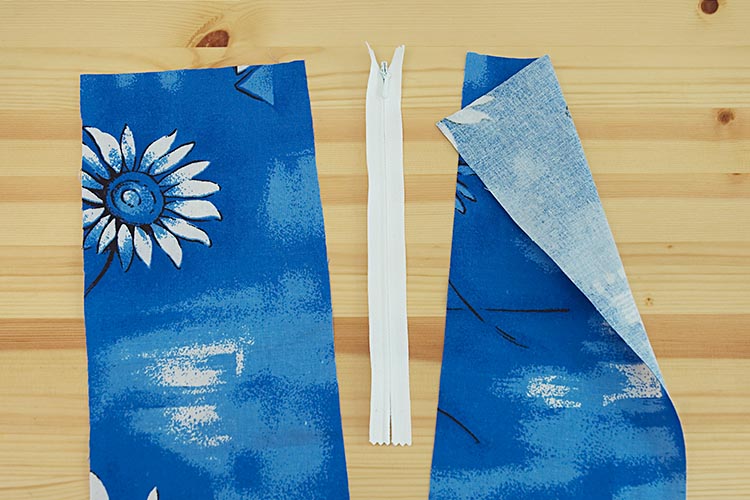 In this example we have two pieces of fabrics and an invisible zipper.
In this example we have two pieces of fabrics and an invisible zipper.
I've chosen threads in contrasting colours to make it more visible.
Normally I would of course use the same colour as the fabric.
I also choose a fabric with an obvious front- and back side.
Note! This method assume 1cm seam allowance which would work on most zippers.
If you use larger seam allowance you should trim it to 1cm for the zipper part.
Note2! When attaching an invisible zipper you "lose" about 3-5cm.
You may want to get a zip which is slightly longer than the pattern suggest.
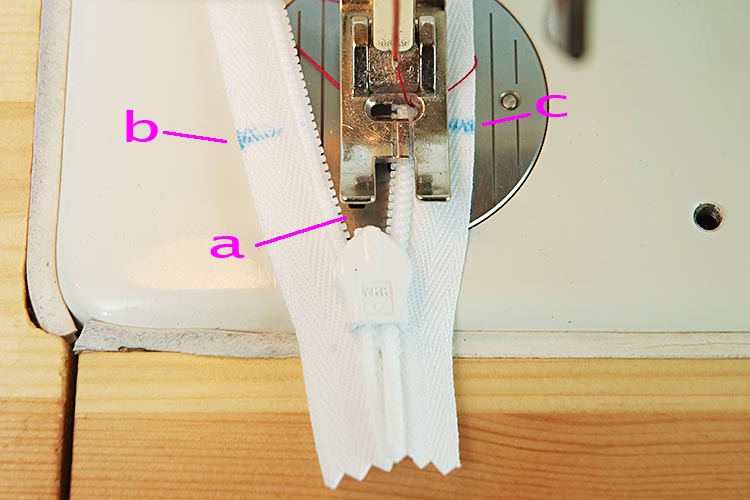 Open the zipper all the way up and place the end about 0,5cm from the presser foot (a).
Open the zipper all the way up and place the end about 0,5cm from the presser foot (a).
Make some marks (b,c) where the needle is. This shows how far we're sewing.
Note that the zipper lies upside-down.
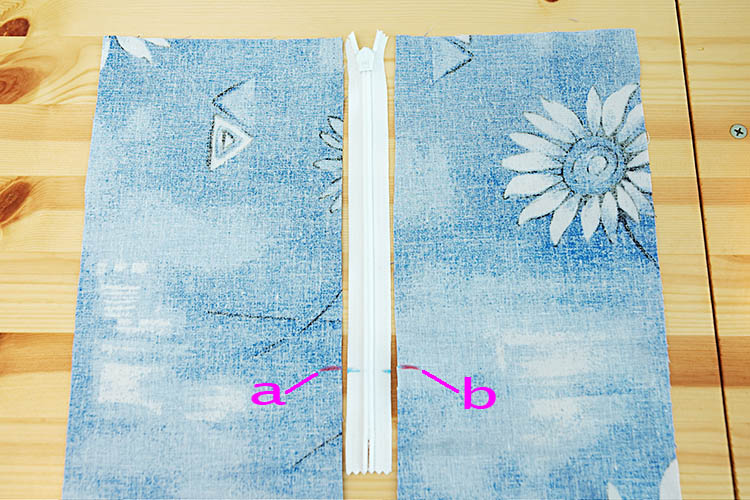 Pull the zipper back up again and place it between the pieces of fabrics.
Pull the zipper back up again and place it between the pieces of fabrics.
Draw similar lines on the back side of the fabric (a,b).
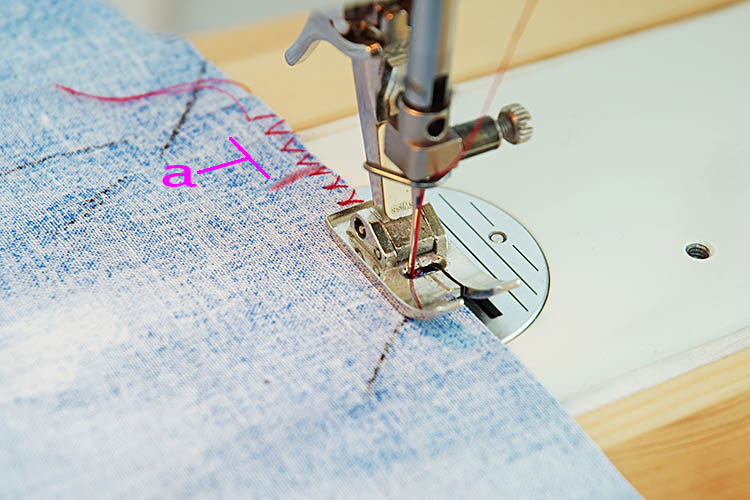 Zig-zag or overlock along the edge starting from 1-2cm above the line (a) and down to the hem.
Zig-zag or overlock along the edge starting from 1-2cm above the line (a) and down to the hem.
You're now overcasting where the zipper is not going to be.
Do this on both fabric pieces.
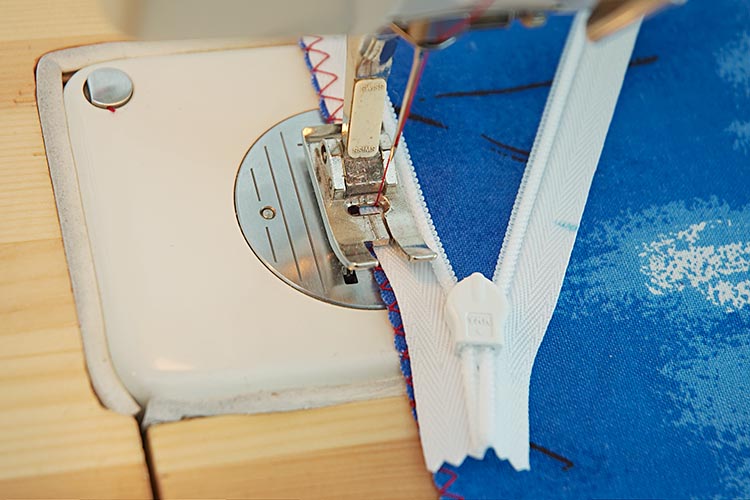 Open the zipper. Align it with the edge of the fabric on the right side.
Open the zipper. Align it with the edge of the fabric on the right side.
Zig-zag along the edge from top to down (important!) until you reach the mark.
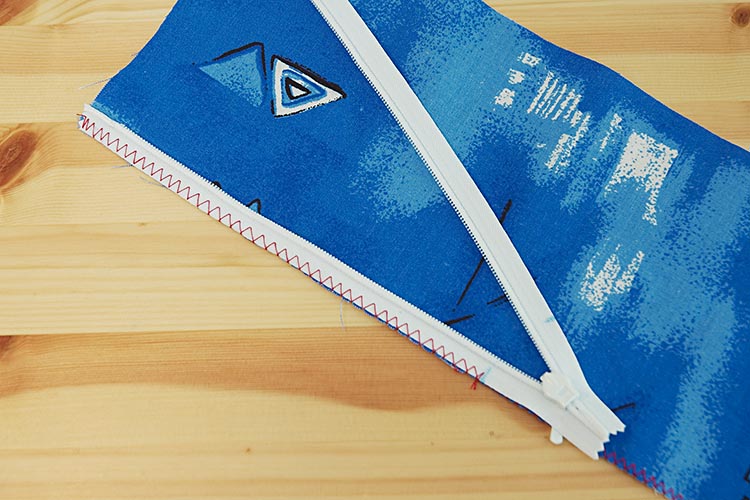 You should now have something like this. Your overcast should overlap a little.
You should now have something like this. Your overcast should overlap a little.
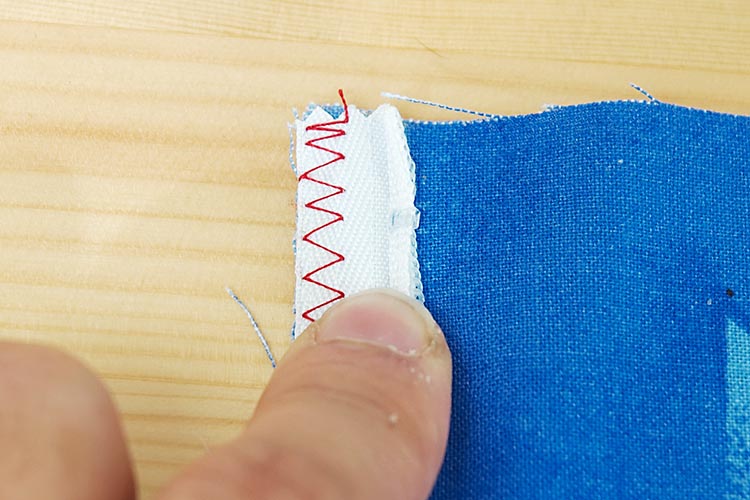 Press the teeth of the zipper open.
Press the teeth of the zipper open.
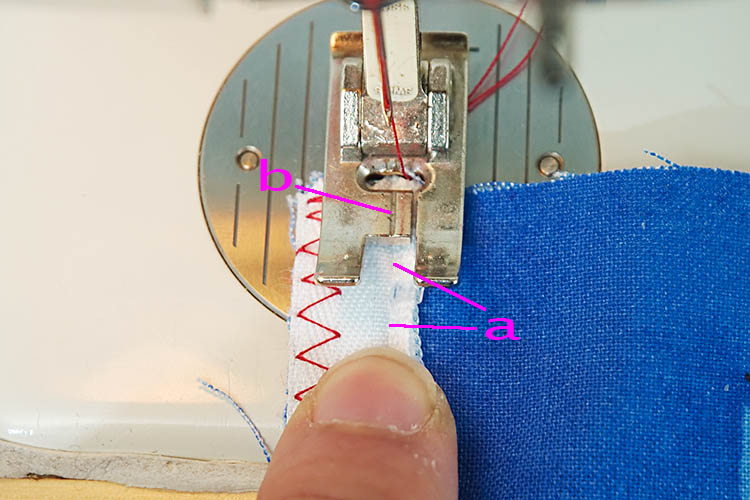 Place under the presser foot and make sure the fold on the zipper (a) matches with the needle's middle point (b).
Place under the presser foot and make sure the fold on the zipper (a) matches with the needle's middle point (b).
Your presser foot may look differently, but it should have a mark which shows where the needle is.
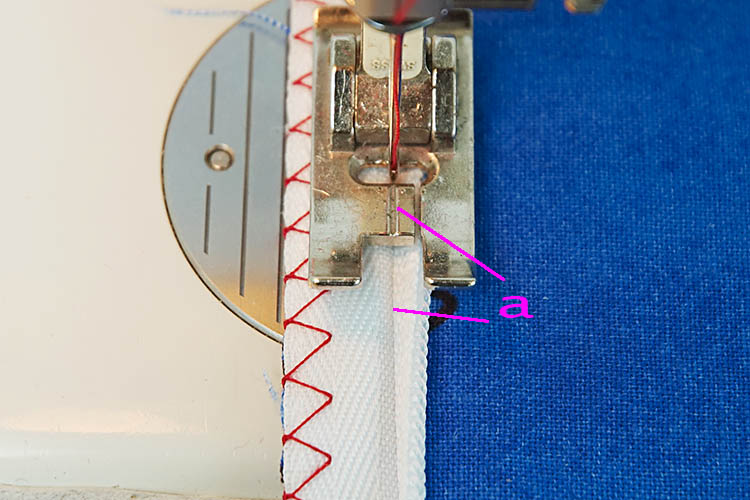 Sew slowly downwards. Remember to always sew from top to bottom!
Sew slowly downwards. Remember to always sew from top to bottom!
This is when the magic happens; the zig-zag keeps the zipper in place while the presser foot opens up the teeth!
Just make sure the fold hits the needle (a) and the rest should be fine.
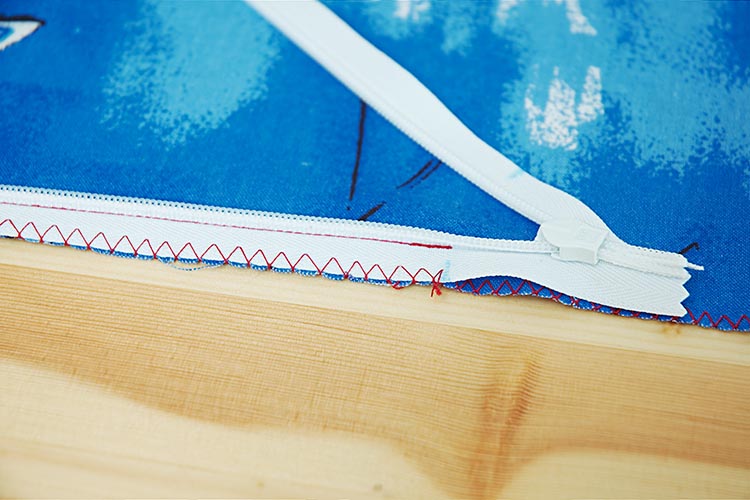 Stop and finish the seam at the line.
Stop and finish the seam at the line.
Do the same on the other side. It's important that you always sew from top to bottom (I'll explain later why).
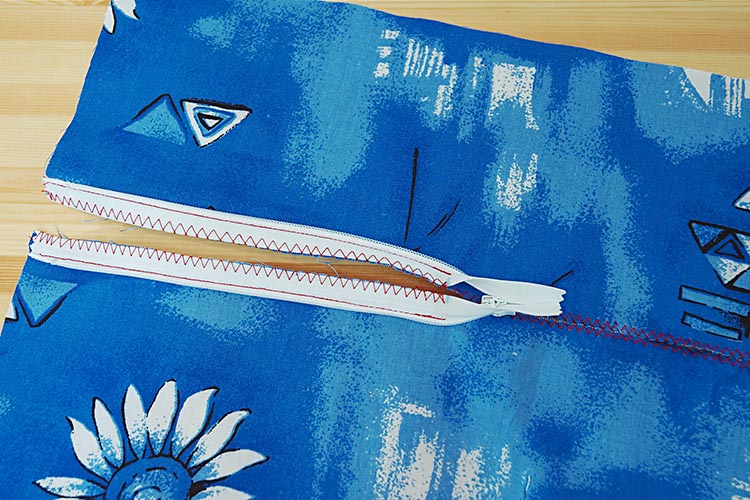 When you're done sewing the other side the zipper may look a little weird.
When you're done sewing the other side the zipper may look a little weird.
Don't worry, it's absolutely normal!
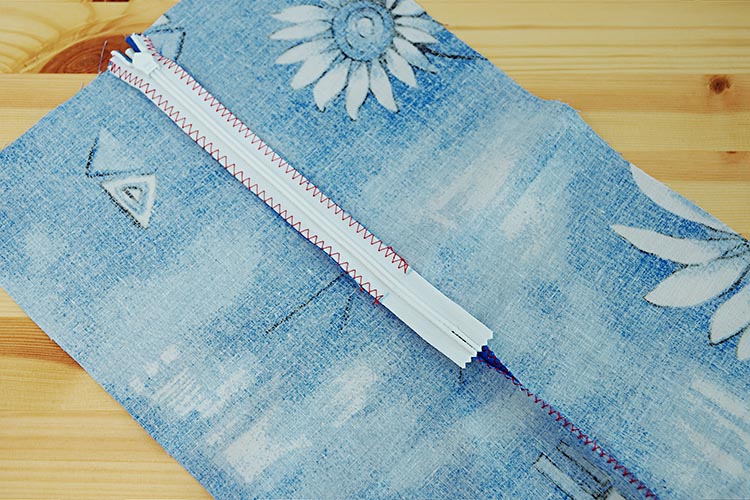 Turn the zipper a bit and pull it up.
Turn the zipper a bit and pull it up.
You can now admire your invisible zip from the right side!
But we're not quite done yet.
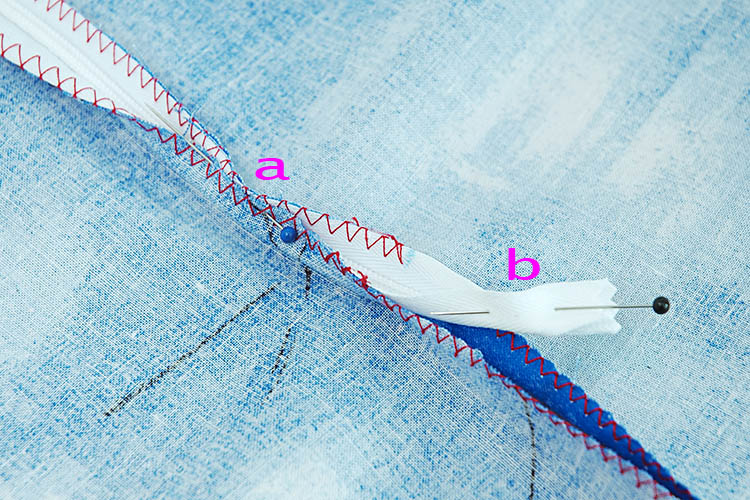 Fold the zipper and put a pin about 3-4cm over the line (a).
Do the same on the part under the line (b).
Fold the zipper and put a pin about 3-4cm over the line (a).
Do the same on the part under the line (b).
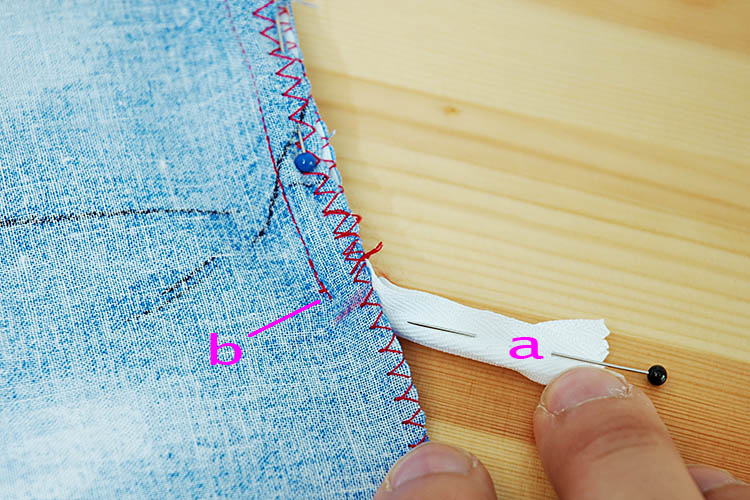 Fold the two pieces of fabric together and align the seam allowance.
Fold the two pieces of fabric together and align the seam allowance.
Pull out the end of the zipper (a) and get it out of the way.
We'll start sewing from point (b).
To be absolutely sure your seams will match you should hand-stitch at point (b) (recommended!).
Do not be afraid of the word "hand-stitch". It's just a tiny bit and it's quick.
This way you can ensure an almost perfect result.
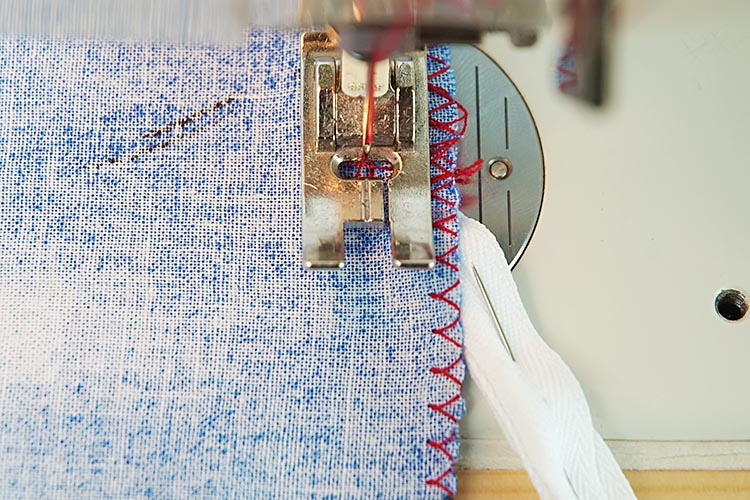 It may be a little awkward making the needle hit the right spot since it's quite thick.
It may be a little awkward making the needle hit the right spot since it's quite thick.
A workaround is to put down the needle while the presser foot is up, then adjust the needle all the way to the right and finally put down the foot.
Carefully make a few stitches. You may consider using the manual wheel for the first 3-4cm.
An easier alternative is using your zipper foot (the regular one).
This is a standard accessory which is included in most sewing machines.
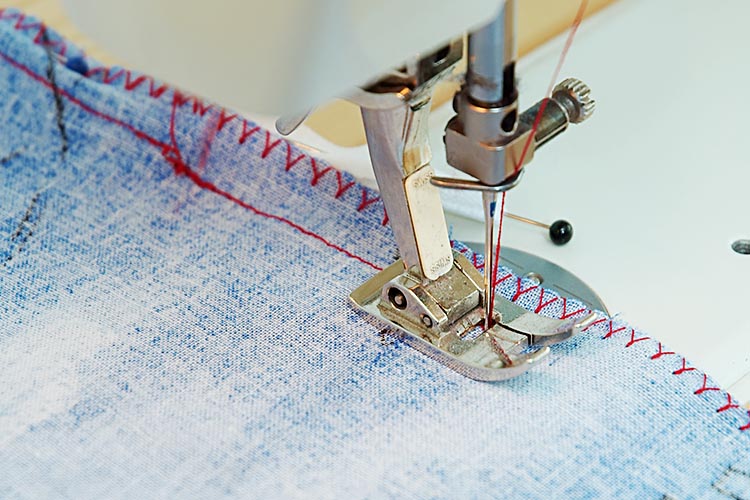 Once you get pass the zipper then you can just break the speed limit!
Once you get pass the zipper then you can just break the speed limit!
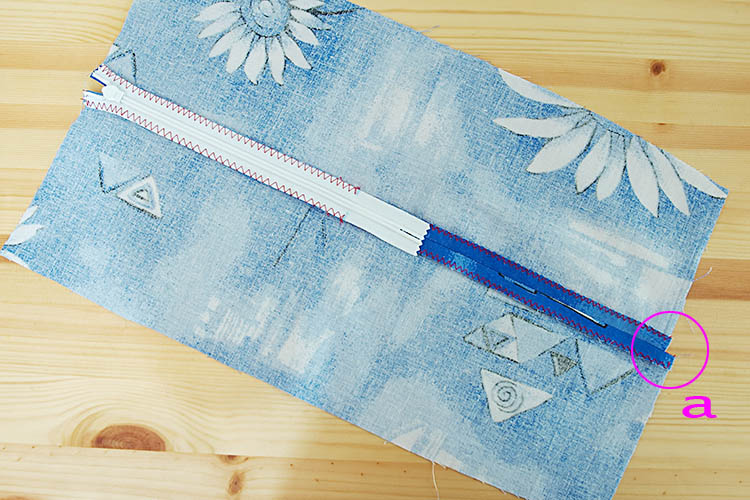 Remove the pins and press the seam allowance open.
Remove the pins and press the seam allowance open.
Notice that I didn't quite nail it perfectly at the bottom of the fabric (a).
But it's easy to correct. Since it's at the hem we can just trim the fabric in order to make them match.
This is why we always should sew from top to bottom.
If you don't match the ends perfectly it's much easier to correct it at the hem than at the top!
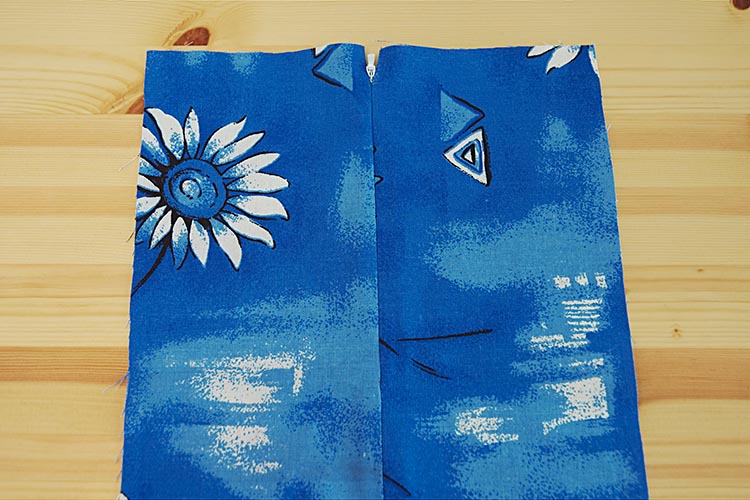
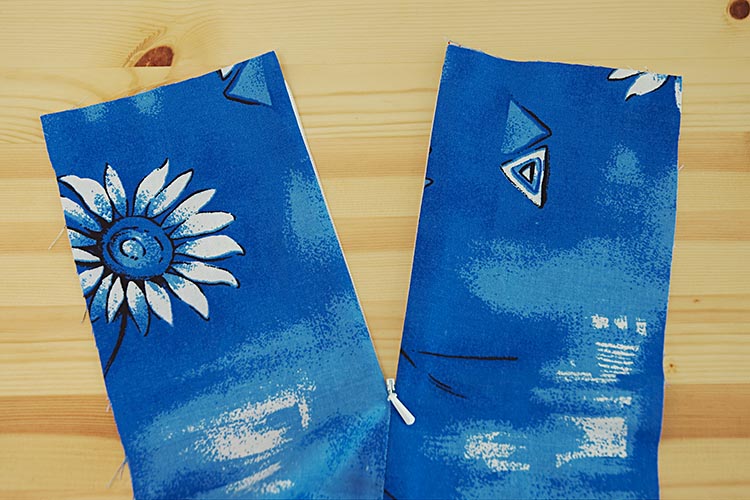
And we're done!
In most garments (skirt, dresses, bags) it's easier to start with the zipper first and attach the other pieces afterwards.
 TikTok
TikTok YouTube
YouTube